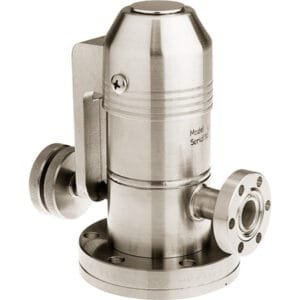ISO HV Centering Rings with Screens: Built-In Filtration for Cleaner High-Vacuum Operation
ISO HV Centering Rings with Screens are dual-purpose sealing and filtration components engineered for high-vacuum (HV) systems that utilize ISO standard flanges. These specialized centering rings combine a stainless steel ring, a fluorocarbon (FKM) o-ring, and an integrated #6 mesh stainless steel screen, offering both vacuum sealing and particle filtration in a single assembly.
Designed primarily for use at the inlet of mechanical vacuum pumps, these ISO HV Centering Rings with Screens act as a first line of defense against system contamination. By preventing loose particulates, metal flakes, or gasket fragments from entering the pump, they help extend equipment life and maintain operational integrity in vacuum plumbing lines, forelines, and basic HV chamber ports.
Key Features of ISO HV Centering Rings with Screens:
Dual Function: Seal + Filter
Each centering ring provides both the standard KF/ISO vacuum seal and an in-line particulate barrier via a robust stainless steel mesh.High-Quality Materials
Constructed with a stainless steel ring for durability, a fluorocarbon (FKM) o-ring for high vacuum and temperature compatibility, and a #6 wire mesh screen for particle filtration.Mesh Specifications
Mesh Size: 6 × 6 squares per inch
Wire Gauge: 20 SWG (0.9 mm diameter)
Square Opening: 3.33 mm
Application Focused
Optimized for installation at the inlet of mechanical pumps, these centering rings help protect rotary vane pumps and dry pumps from particulate ingress during chamber venting, tool maintenance, or system instability.Standard ISO Compatibility
Compatible with ISO-K and ISO-F flange systems in sizes including ISO63, ISO100, ISO160, ISO200, and larger. Each ring fits precisely between mating flanges, ensuring proper alignment and sealing force for vacuum integrity.
The use of fluorocarbon (FKM) o-rings ensures chemical resistance and thermal stability for a wide range of HV applications. These o-rings are suitable for operating temperatures between -20 °C to +200 °C, and maintain sealing performance under vacuum levels down to 10⁻⁸ Torr.
Common Applications Include:
Inlet protection for mechanical vacuum pumps
Foreline filtration in vacuum processing systems
Chamber protection during venting and purge cycles
Preventive maintenance in analytical and thin-film systems
TFM also offers ISO HV Centering Rings without screens for standard applications where debris filtration is not required, as well as custom centering rings with specialized mesh ratings, alternate elastomer types (e.g., Buna, EPDM, silicone), and metal screens for reactive or corrosive environments.





Reviews
There are no reviews yet.